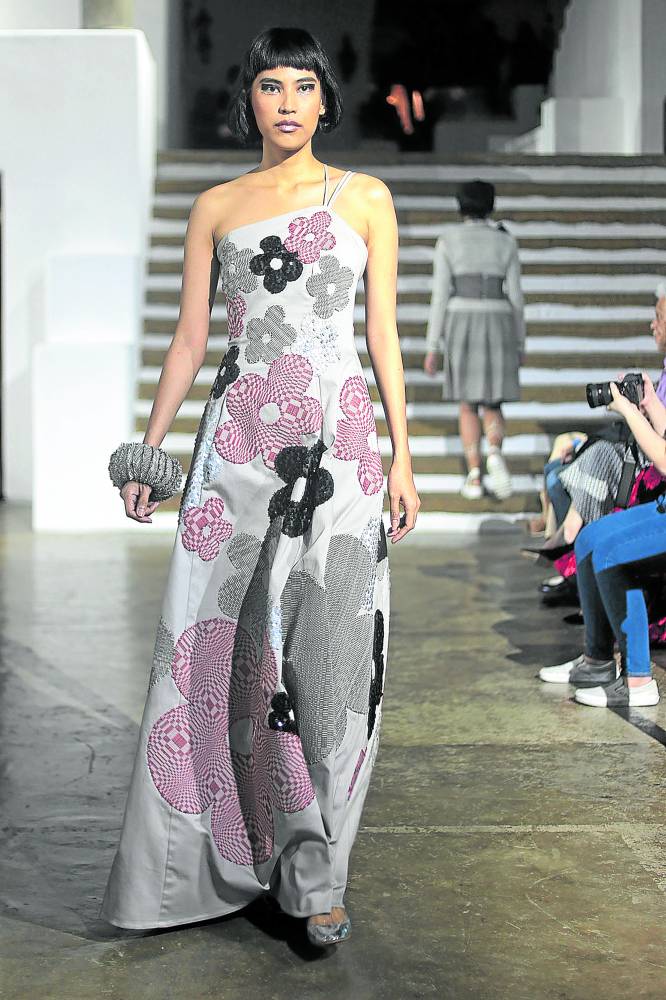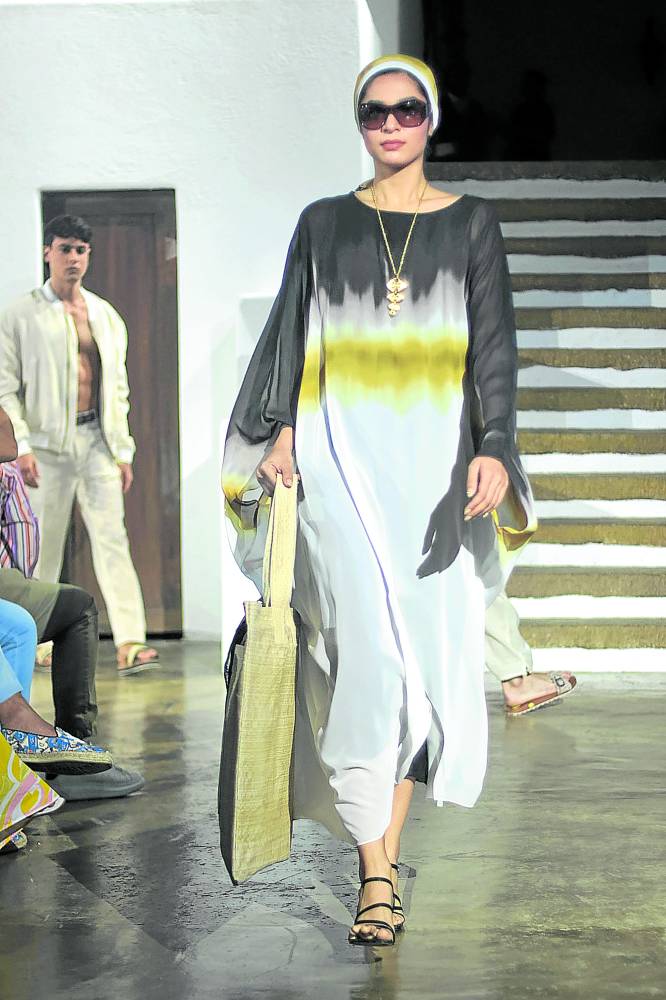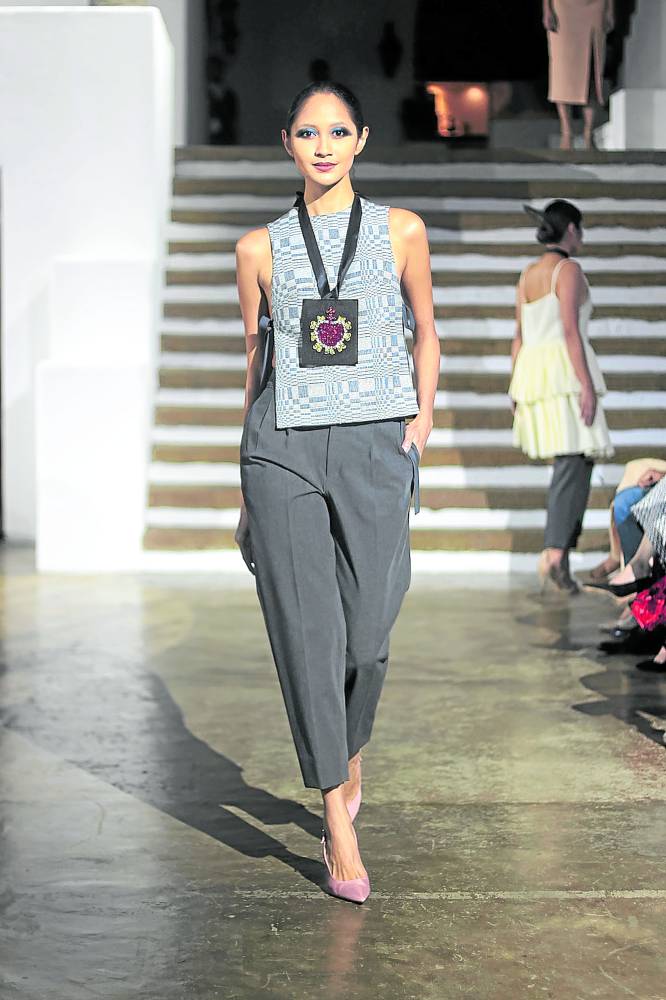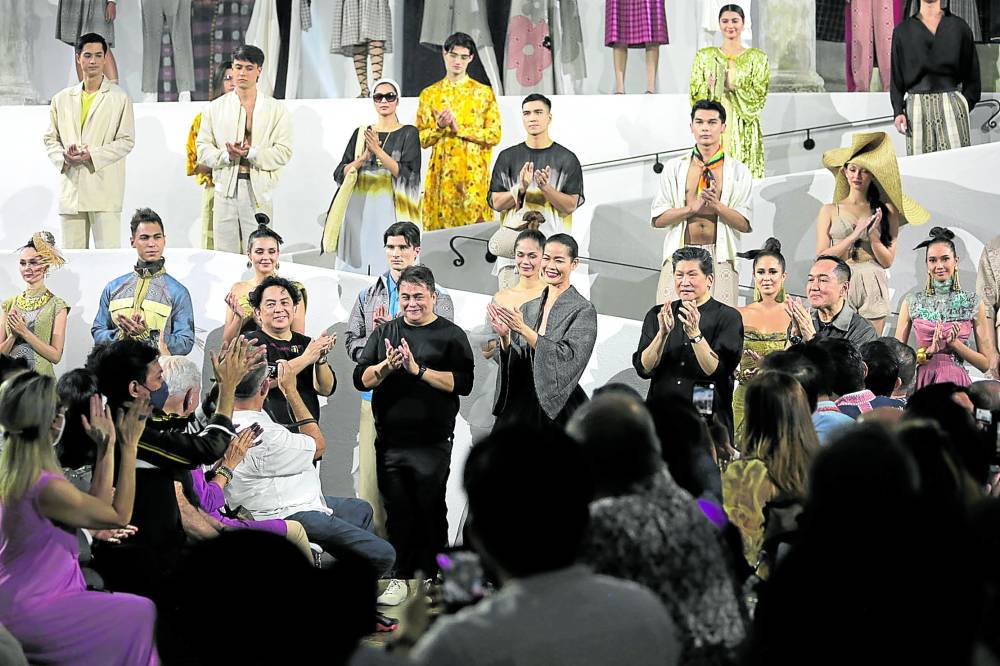
It seems neurologist Dr. Joven Cuanang has a knack for bringing nature and art together and out to the masses.
First with his Pinto Art Museum in Antipolo, Rizal, that makes its many featured artworks extremely accessible and endlessly Instagrammable; not to mention how its hilly terrain turns visits into a short hike, practically pushing its patrons to chuck the usual formal footwear for comfy sneaks.
And recently with “Algodon,” the culminating show that literally started from seed several years ago.
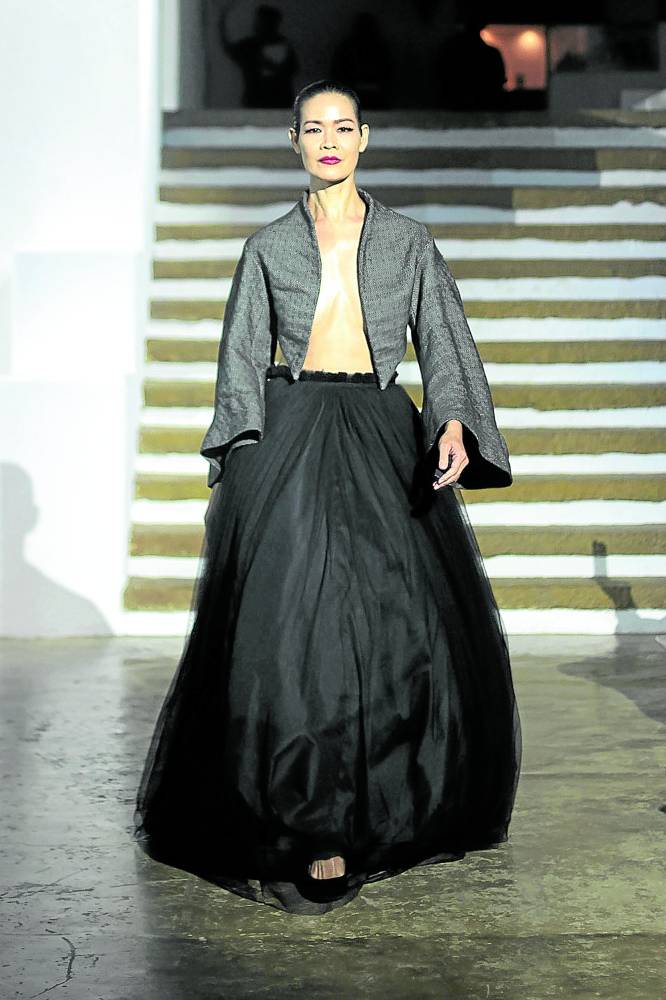
Last Sunday, the museum’s Gallery 7 played host to established local designers’ tribute to indigenous woven fabric from Northern Luzon, an idea that was planted by Pepito Albert and germinated with the help of Cuanang, who has made it his mission to revive the Ilocano cotton industry. (In 2016, the Ilocano doctor paid for the water pump for irrigation to convince farmers to go back to planting cotton instead of tobacco in his bid to preserve the dying tradition.)
In the deft hands and inspired imagination of designer friends Albert, Vic Barba, JC Buendia, Tonichi Nocom and Randy Ortiz, inabel (also called abel) and cotton gauze—fabrics created from pure cotton harvested in Pinili, Ilocos Norte, known best for being used as blankets and mosquiteros (mosquito nets)—have ventured out of the bedroom and into the runway and, from the looks of it, out into the real world, too.
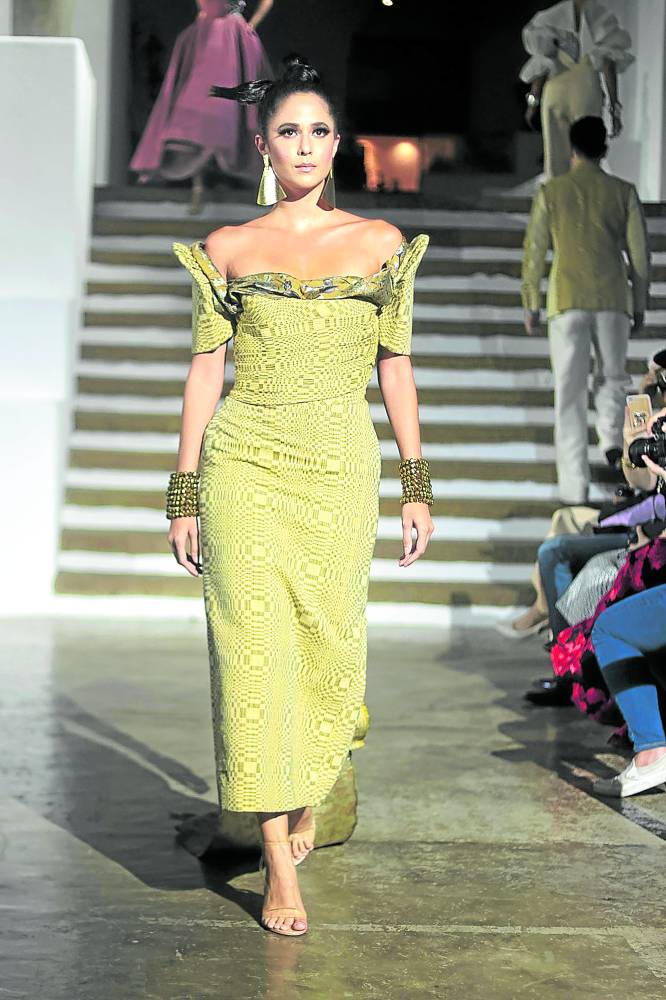
If the mission was to show the versatility and wearability of the fabrics, then the group collectively known as Sunday Sizzlers (for their weekly get-togethers that include lots of food and fun chatter) delivered in droves, with the show featuring a wide range of clothing options for every occasion.
Artful combination
Lately, inabel has been a favorite medium for Filipiniana designs. But the show proved there’s more to the fabric than that.
In a runway that seemed to mimic the labyrinthine pathways of Pinto Museum, the models flowed around the audience in an array of garments ranging from relaxed to reserved, delicate to daring.
For his collection, Barba capitalized on the distinctive patterns of the inabel.
“If you look at the abel fabric even in ancient times, they’re actually very modern—pop art. So that was where I took inspiration,” Barba said. “There is a ‘60s vibe in my collection. My design mission was to show it in its plurality where you can mix it.”
Barba’s artful combination of fabrics and patterns made for a fun pocket collection, with its delightfully unexpected accents and his skillful display of techniques.
Having hailed from San Nicolas, Ilocos Norte, Barba has been working with inabel since he was young and part of his advocacy has been to use the local weave in his designs.
It was, however, his first time to use pure cotton inabel since the widely available weaves are usually mixed with polyester. “It’s softer, more breathable,” he said of the fabric. “You have to know the possibilities around them. You can’t drape them like you would with crepe or chiffon, but it has body. So you could have some form of layering, some form of draping but not the loose drape.”
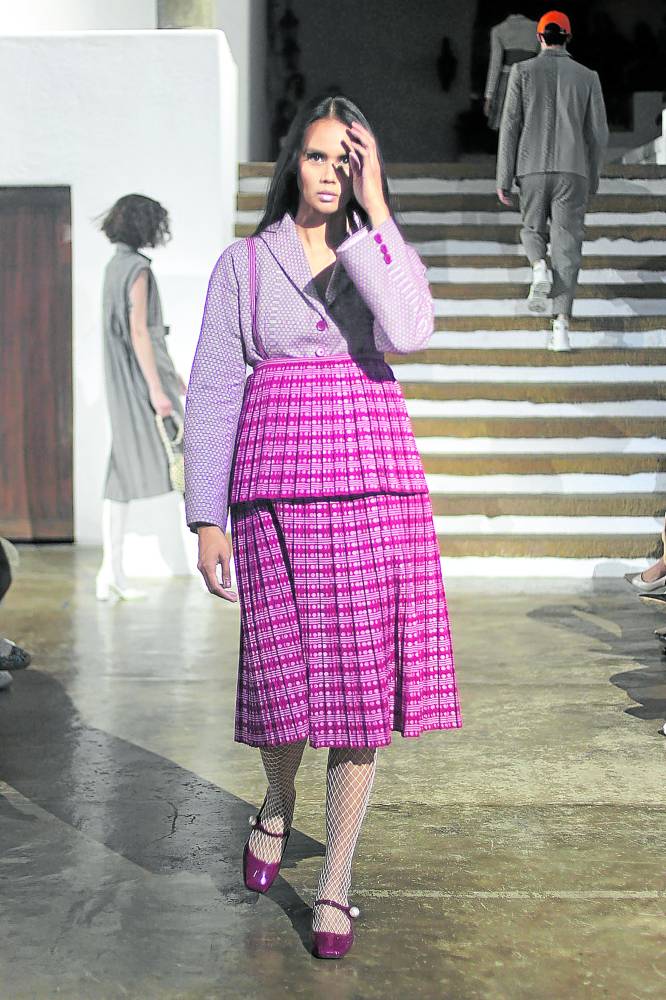
Ingeniously simple
From the designer who brought back the idea of the terno as separates, essentially boosting its wearability factor, comes another spark of inventiveness that addresses issues of fit in an ingeniously simple way.
A standout among Buendia’s collection of polished looks is the bib that ties at the sides and comes in different lengths.
“As a designer our task is to interpret the cotton inabel into wearable fashion today,” the Fashion Design Council of the Philippines (FDCP) president said. “You just put the bib over and tie it at the sides. It becomes more figure-friendly.
“You can wear it over a long gown or something casual. So you have an instant Filipiniana and it’s ready to pack, which is something I always keep in mind. You won’t need to put it in a different chest. You can just fold it and put it in your carry-on luggage.”
Versatility, sellability
About using pure cotton inabel, he added, “What’s good is it’s sustainable and cotton farmers and the weavers benefit, so it’s a whole chain.”
Buendia found this particular weave a joy to work with. “Because it’s pure cotton, it’s very easy to iron and it’s very cool, so it’s perfect for Philippine weather,” he said.
And Nocom agreed, saying he made resort wear because the Philippines is a resort country. For his collection, he returned to his first love, menswear, although he made a handful of women’s garments as well. He added that his focus for his collection was the fabric’s versatility, sellability, wearability and comfort.
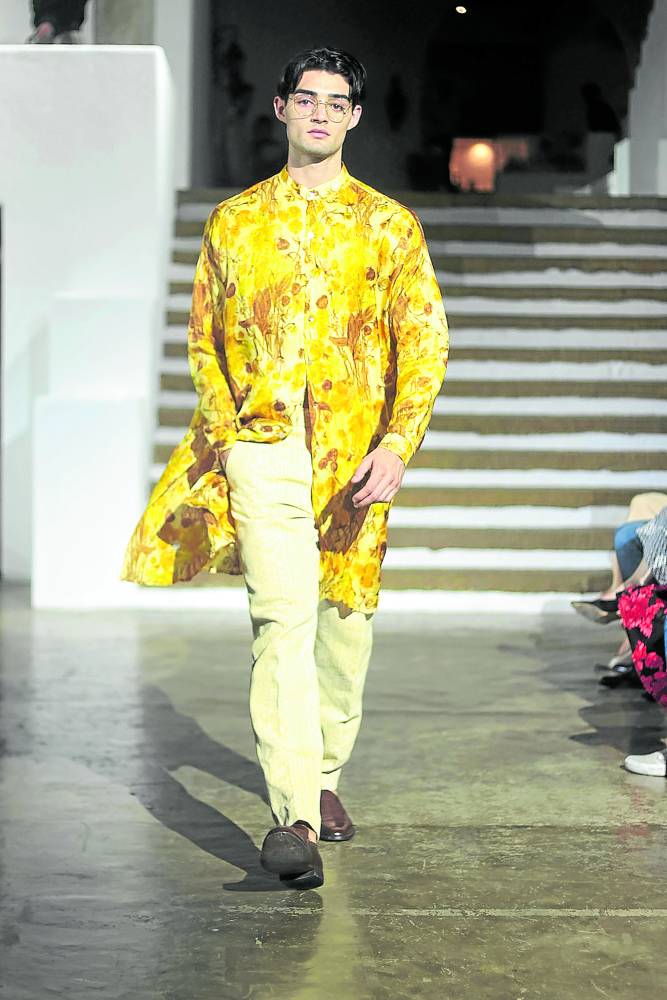
Moving from day dressing to evening to travel, the flowy mosquitero fabric lent the collection ease and breeziness often associated with relaxing at the beach or poolside.
As it was his first time working with inabel, Nocom was faced with some challenges: one being the inabel weave is only about 22 inches long.
Another thing is that the fabric is very superfluous so the threads get loose when cut. “What I did was I starch it first, then I cut it so it won’t fray easily.”
According to Nocom, it also takes a while to make the complete fabric since these are woven by hand and not a machine. He related that the fashion show was originally scheduled for earlier but had to be postponed to accommodate the process of weaving and choosing the fabrics to use for their collections.
But otherwise, the fabrics were easy to use, he said, adding that he also used inabel in his bags and sandals.
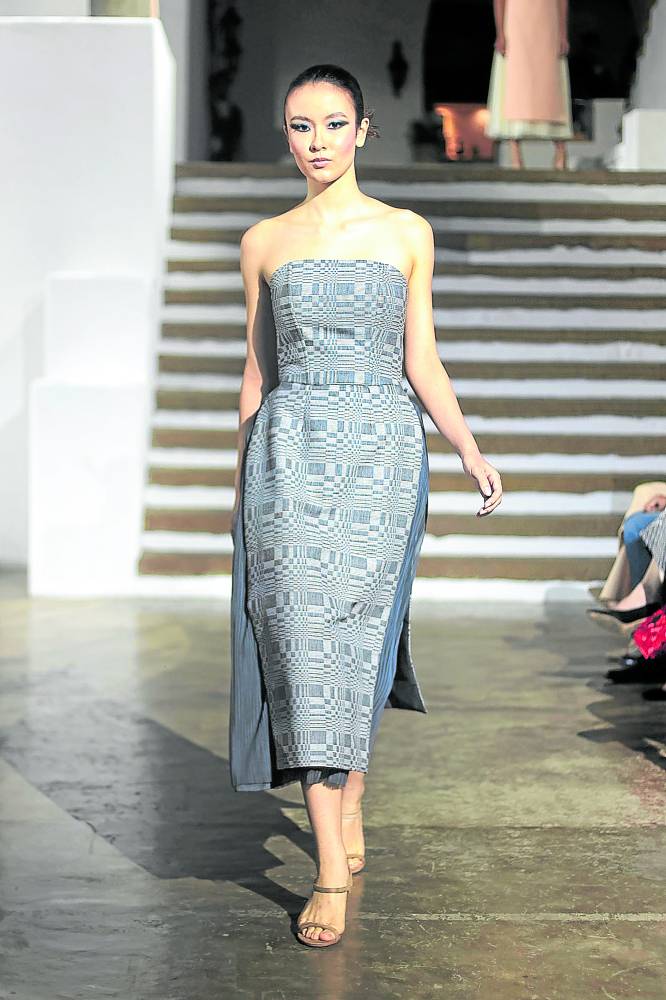
Advocacy
“Of course, it’s a lot easier for us to work with something with polyester,” Ortiz said, clarifying that they were also allowed the use of other commercial fabrics in their designs. “These days, everything has to be sustainable so it’s really all part of that advocacy that we have to do something more organic, more natural, that is really friendly to the environment, and sustainable at the same time. Because fashion, after all, has to be sustainable.”
This advocacy, he said, is close to his heart. When he was the president of the Fashion and Design Council of the Philippines, “we had so many projects promoting local weaves from different regions,” Ortiz said. “The pandemic had a big effect on the fashion industry, so I feel like for us to really bounce back, we have to utilize what we have first. I think it’s really more of giving identity to what Philippine fashion is all about.”
Ortiz’s masterful designs manage to create lovely cocktail dresses and pantsuits that are somehow both delicate and structured.
Albert, who had to bow out of appearing at the fashion show due to an illness, created the glamorous finale: an all-black ensemble made up of an inabel kimono jacket and a floor-length silk taffeta and Swiss tulle skirt, elevating the Ilocano bedroom staple to high fashion.


